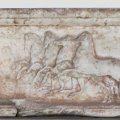The University of Queensland’s research team last night received a portion of the data packet from telemetry teams 400km down range following Saturday’s HyShot™ III scramjet experiment launch in Woomera, 500km north of Adelaide, Australia.
The down range team is located not far from the nominal impact area in a remote desert region of South Australia not serviced by roads.
Scientists will today examine the data covering the duration of the 10-minute flight and particularly for the six precious seconds when the scramjet experiment took place shortly before impact.
They are not sure how long it will take to determine the outcome of the experiment.
Click here to view footage of the liftoff and here to view preparations before the launch.
The $2 million University of Queensland-led HyShot™ III experiment used a scramjet engine developed by UK company, QinetiQ.
The scramjet was attached to a Terrier-Orion rocket combination and aimed to fly at an estimated Mach 8 (or about 8000km/hr), or about 10 times faster than a conventional jet engine.
The purpose of the experiment was to correlate measurements achieved in ground test facilities at The University of Queensland in Brisbane, Australia, and at QinetiQ at Farnborough, U.K.
HyShot™ program leader Professor Allan Paull, his brother Dr Ross Paull and U.K. scientist Rachel Owen of QinetiQ examined the fins from the first stage rocket of the Terrier-Orion rocket combination at the weekend.
The scramjet payload is attached to the second stage of the rocket combination, some 400km down range. Recovery teams are expected to search the region to attempt to retrieve the payload this week.
Professor Paull said at this stage it looked like a second scramjet experiment would be scheduled for Wednesday, March 29, also at Woomera at about 12.30pm local time (CDT).
“We have one launch down and one to go,” he said. “We have a job to finish.”
This flight experiment is a commission from the Japan Aerospace Exploration Agency (JAXA) to The University of Queensland.
The experiment is designed to benefit the development of future space transportation systems. It is hoped that the $1.3 million HyShot™ IV program will provide more extensive scramjet pressure and temperature measurements than previous flights.
Last week it was announced JAXA has gifted its $2 million advanced launcher to UQ for peaceful scientific experiments, such as those to further scramjet technology. The launcher was used for HyShot™ III and will be used for HyShot™ 1V.
Scramjets (supersonic combustion ramjets) are being touted as the next generation of cheap travel, allowing the possibility to launch communications satellites more cheaply or to travel between one side of the planet and the other in a few hours. They inhale oxygen from the atmosphere to burn their fuel, rather than carrying oxidisers in their tanks.
UQ is an international leader in scramjet research, achieving combustion in these engines in flight for the first time anywhere in the world in 2002.
A contingent of 90 people is involved in the 2006 Defence-managed trials, including personnel from the Directorate of Trials (DTRIALS), and the Aerospace Operational Support Group (AOSG) Range Operations Branch.
Professor Paull said the UQ team was thankful of the support from their research partners, and heartened by the kind well wishes they had received from the general public.
Media: Further information:
UQ: Jan King UQ Communications + 61 408 728 810 (Woomera range) or +61 413 601 248 (Woomera township), j.king@uq.edu.au
QinetiQ: Christopher Moseley, QinetiQ Press Office, +44 (0) 1252 395559, cgmoseley@qinetiq.com
JAXA: JAXA: Public Affairs Section, General Services Division, Institute of Aerospace Technology,
Japan Aerospace Exploration Agency
7-44-1 Jindaiji Higashi-machi, Chofu-shi, Tokyo, 182-8522
To view video footage of the liftoff: www.omc.uq.edu.au/video/hyshot/liftoff.mov and www.omc.uq.edu.au/video/hyshot/HyShot3.mov
To view and download launch and other Woomera campaign images: https://www.uq.edu.au/news/press/press-gallery.php or contact UQ photographic library coordinator Ms Diana Lilley, email: d.lilley@uq.edu.au
.jpg)



